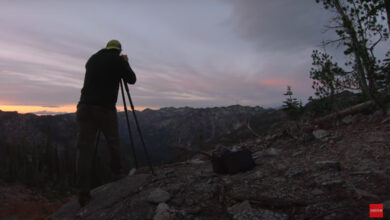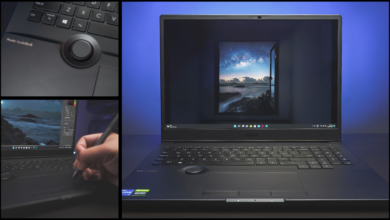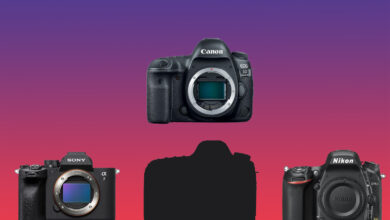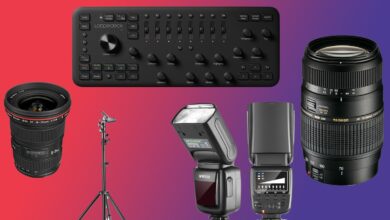Fstoppers Reviews the Sony Xperia 5 III Smartphone for Photography
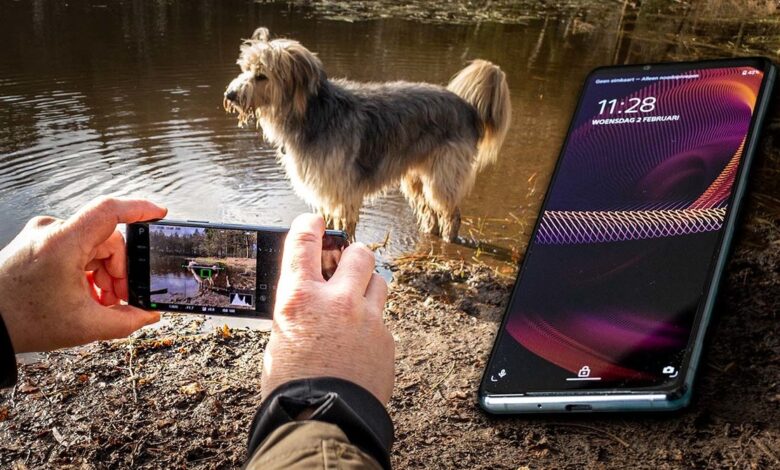
When I got asked to review a smartphone I had my doubts. I don’t believe a smartphone can be used for serious photography. But I realized it was an opportunity to see if my opinion was biased or not. I received the Sony Xperia 5 III to look closer at its photographic abilities.
When I said yes to the offer Sony Netherlands made, I was thinking about the press releases of the Sony Xperia smartphone that had a Sony Alpha sensor built-in. I soon discovered this was the Sony Xperia 5 Pro, a 2,000 dollar smartphone. The smartphone I received was just the Sony Xperia 5 III, the second-best in the lineup. Although not the top model, it’s a 1,000 dollar smartphone with some amazing camera options.
I decided to test the Sony Xperia 5 III for photography only. So if you are looking for an in-depth review on audio, video, gaming, and phone capabilities, perhaps you should look a bit further. I used it exclusively for photography.
Another detail is the starting position of this review. In my opinion, a smartphone is not suited for serious photography. It may have different lenses and huge resolutions, for obvious reasons the sensor is very small. It can’t compete with larger sensors on signal-noise ratio, ISO performance, and the creative use of depth of field. And the handling of course. It’s something to take into account.
I think a smartphone can be used for photography that suits social media and for capturing things that are memorable but doesn’t need a perfect quality photo. Perhaps these photos are suited for small printed albums, but I believe most users of smartphones will keep their memories on the memory card (pun intended).
Some Details
The Sony Xperia 5 III doesn’t hold many surprises. It’s a 15.7 cm long smartphone, 6.8 cm wide, and only 8.2 mm thick. It weighs 168 grams.
The screen measures 6.1 inches in diameter with a 2520 x 1080 pixel resolution. The 21:9 CinemaWide HDR OLED screen has a refresh rate of 120 Hz or 240 Hz in motion blur-reduction setting. The Android smartphone is weather and dust resistant and runs on a Qualcomm Snapdragon 888 5G Mobile Platform.
The smartphone cover is made of Corning Gorilla Glass 6. It is built to withstand a drop from 1.6 meters onto hard and rough surfaces. It’s scratch resistance but also extremely slippery. This is something to take into account when operating the Sony Xperia 5 III as a camera.
It becomes more interesting for the photographer when we take a closer look at the Exmor RS type sensors and Zeiss optics with Zeiss T* coating. There are three sensors with a different lens each. On top, we find the 16mm f/2.2 lens with a 1/2.5 inch sensor. The next lens is the 24mm f/1.7 with a 1/1.7 inch sensor. At the bottom of the lens array, there is a combined 70mm f/2.3 and 105mm f/2.8 lens with a 1/2.9 inch sensor. All three sensors have a 12-megapixel count.
Keep in mind, every time I mention the focal length, it will be the full frame equivalent. The real focal lengths of the lenses are 5.11mm, 10.22mm, and 14.5mm.
Left of the screen you will find the cradle for two SIM cards, or one SIM card and a micro SD card. It accepts memory cards up to 1 TB. The internal memory is 128 GB. All the physical buttons are located on the other side. From top to bottom there is the volume button, which also operates the zoom when photographing, the fingerprint scanner which also acts as the power or standby button, the third button will activate Google by default, and lastly, we find the shutter release button.
The Camera App Interface
Sony has the camera app interface based on that of the Sony Alpha mirrorless system. The 6.1-inch screen is divided into two parts. On the left-hand side is the viewing screen, the viewfinder if you will. On the right-hand side, the controls of the camera can be found. It’s not possible to collapse these camera controls. On top of that, the controls will not rotate with the orientation of the smartphone.
At the left edge, the exposure programs can be set. You can choose between a green setting, program setting, shutter priority, and manual. There is also a memory (MR) that allows you to program a custom camera setting. The left edge is also the place to choose between the different available focal lengths.
Zooming is possible with every lens you choose. But you need to switch between lenses manually. This way it’s possible to zoom from 16mm up to 24mm, from 24mm up to 70mm, from 70mm up to 105mm, and 105mm up to a staggering 300mm focal length.
There is a small menu that allows you to change the camera behavior, divided into 4 main categories. Lastly, there is the possibility to change the camera app to a regular smartphone camera app. Strangely enough, this interface will rotate when the orientation of the smartphone changes.
The standard camera app offers creative filters and possibilities that will address the more common smartphone users. It also has a special bokeh switch to simulate a small depth of field. The standard camera also allows the use of the eye-AF.
The Autofocus System and Speed
The one thing that sets the Sony Xperia 5 III apart from the rest of the smartphones is the possibility for eye AF and real-time AF tracking. It’s the same system that can be found on the Sony Alpha mirrorless system. And it works quite nicely.
The system recognizes a face in the frame and locks focus on the eye. If multiple faces are in the frame, it’s possible to tap onto a face to activate the eye AF on that face. It works for both humans and animals. For this AF system to work properly, the shutter release button has two pressure points just as you would expect from a normal camera. The first pressure point will activate the autofocus, the second pressure point will take the photo.
When switched to real-time AF tracking, the Xperia 5 III will track a subject moving through the frame. When shooting with the 24mm lens and jpeg file format, you will be able to shoot at 20 fps. There is also a low-speed setting, that can be used with the raw file format.
Using the Sony Xperia 5 III for Photography
It’s not fair comparing a smartphone to a regular camera. But since it’s set in the market as a smartphone for serious content creators, I will look at the Xperia 5 III from a photographer’s point of view and try to determine if it can replace a regular camera.
Handling the Sony Xperia 5 III as a camera is difficult. This is with all smartphones, of course, it’s not limited to this Sony smartphone. But the slippery Gorilla Glass 6 makes it even more tricky. Before you know it’s slipping out of your hands. I would strongly suggest using a proper smartphone case.
I find the location of the touch-sensitive power button not convenient. It allows the smartphone to get unlocked by fingerprint, but even by grabbing the smartphone from your pocket, you will touch the button. After a few times, you need to use the pin code. This happens too often. Even when operating the smartphone the button is easily touched on accident. This also applies to the button that activated Google.
When holding the Xperia 5 III as a camera, it works reasonably well. The shutter release button is in a good position and the two pressure points are great to use. Zooming with the touchscreen works well, but your hand will block the view on the screen, or the camera module on the back. The use of the volume button to zoom is advisable, although the speed of zooming can be a bit too fast.
The interface works well, allowing you to choose a wide range of camera settings you would normally find on a regular camera. The AF system will recognize faces in the frame, or find a subject. Tracking works fine and if the system won’t find a clear subject, tapping on the screen will lock the AF at that subject. It can be tempting to zoom on the screen, but if you want to change the lens, it has to be done manually. The Sony Xperia 5 III won’t change lenses automatically when zooming in.
About the focal lengths of the Xperia 5 III, I do like the 16mm and 24mm focal length, but the next one is 70mm. That’s a rather big gap, instead of 70mm a 50mm focal length would have been more logical. But I understand it was necessary to make the 105mm possible with that same lens and sensor.
Using the 20 fps burst ability will force you to shoot in 24mm focal length and jpeg file format. Combined with the real-time AF tracking it should make action photography possible. I do find the 24mm focal length a bit too short, making it necessary to get close to the subject. Getting close will make tracking the subject more difficult, forcing the AF system to work hard keeping the subject in focus.
I used the tracking and 20 fps on several occasions, but almost every time under less than ideal light situations. Due to the short focal length, the subject has to be close, which will need a very fast shutter speed to prevent motion blur. The example has a shutter speed of 1/200 sec, but I would advise using at least 1/2000 sec. Unfortunately, there was not enough available light to make this possible.
Image Quality
Despite all the technical wonders, if the image quality is not perfect the results will be disappointing. The Sony Xperia 5 III allows shooting in both DNG and JPEG at the same time. I used this setting for most of the occasions and it offered me a good way to compare the results.
The first thing I noticed was the soft appearance of the DNG files. At first, I thought it was due to camera shake. I even wondered if I was looking at two different images when I compared the DNG to the JPEG. I felt quite disappointed and at first, I expected the DNG files to be unusable. But with an aggressive sharpening in Lightroom Classic, it was possible to mimic the sharpness I saw in the JPEG files. Just compare the examples below yourself and make your own conclusion.
I did also a test on ISO performance. The Sony Xperia can go up to ISO 1,600 or ISO 3,200, depending on the focal length you’re using. The results are from the in-camera JPEG and I must admit, it looks surprisingly good for a smartphone.
I used the DNG files to check on the ability to recover the shadows. As expected the image is deteriorating fast. At 3 stops exposure compensation in Lightroom Classic, color noise is appearing as a ring in the frame. I think the limit is about 2 stops with the 24mm lens. I didn’t test it with the two other lenses.
It is possible to use a Dynamic Range Optimalization (DRO) setting. It will protect the highlights up to a certain threshold. The smartphone allows the use of HDR, but you have to shoot in JPEG exclusively. If you have DNG enabled, HDR is not available. Unfortunately, I haven’t found automatic exposure bracketing options. If you want to use exposure bracketing, it has to be done manually.
My Conclusion After a Few Weeks of Use
I went into this review with high expectations. It was said to be a wonderful smartphone for the serious content creator. Although I didn’t get the Sony Xperia 5 Pro model, I expected the Sony Xperia 5 III to perform very well with amazing quality photos. But I was very disappointed with the results. Especially the DNG files which didn’t have the image quality I hoped for. I think it falls far behind compared to other smartphones I’ve used.
If I compare the DNG files to the iPhone XR, which was released in 2018, I think the results of the iPhone XR are more usable. Although the examples below aren’t made on the same day and are under different light situations, the difference in sharpness is striking. I would expect the close-up to show much more detail compared to the dog at a greater distance. Both have been post-processed in Lightroom Classic to my own liking, but not sharpened at all. By the way, both smartphones have a 12 mp camera.
I do like the Eye AF on the Sony Xperia 5 III; It works like a charm. Tracking seems to work also very well, and seeing the green boxes on the spot where the AF system has focused is very convenient. I do have my doubts about the usefulness of this eye AF system. Looking at the sensor size, the depth of field is always large, even with the available apertures. I believe most of the time, the image will look sharp even if it misses the eye within inches. Nevertheless, the ability to use the eye AF is a great thing to have in a smartphone. No doubt about that.
To add things up, I’m disappointed with the quality of the images of the Sony Xperia 5 III. Despite the camera functions Sony has implemented, if you’re serious about photography I believe you’ll be better off with a normal camera. Keep the Sony Xperia 5 III for the social media content and capturing nice moments for keepsake.
Things I Like
- Eye AF system both for humans and animals
- Real-time AF tracking
- Three lenses with different focal lengths
- Relatively good ISO performance
- Shutter release button has two pressure points, the first for AF activation, the second for taking a photo
- Spot measurement available
- Real-time histogram
- AI super-resolution zoom ensures a 12 mp image, even with digital zoom
- Clear AEL button on screen with locking
- Many settings available, similar to the Alpha mirrorless camera back LCD screen
- Many creative possibilities in the ordinary smartphone photo app
Thinks That Could Be Improved
- Smartphone is extremely slippery
- Power/standby button is not well placed
- Camera information doesn’t rotate with a change in smartphone orientation (except in the normal photo app)
- The camera information takes a lot of space on the screen and you can’t collapse it
- DNG files lack quality and sharpness
- The gap between 24mm and 70mm is too large
- You need to switch over manually between different lenses.
- The 20 fps burst is only available with the 24mm lens and JPEG file format
- HDR is only available in JPEG file format
- Zooming beyond 200mm is almost unusable handheld
- No aperture available
- Not enough physical buttons to imitate the use of a normal camera
- Necessity of eye AF is questionable due to the natural large depth of field with small sensors (but it’s great to have onboard nevertheless)
Some Things I Didn’t Mention
The Sony Xperia 5 III is more than a camera alone. It can also be used as a video camera. You are able to shoot UHD and HD video in different frame rates, including 120 fps. There is SteadyShot available and the great AF system also works for video.
Do you like audio? There is spatial audio available and it supports Dolby Atmos. If you’re a gamer, the Sony Xperia 5 III acts as a Remote Play with Dualshock. Ah yes, I almost forgot, on top of that it has also the ability to make phone calls.
I want to thank Sony Netherlands for providing me with the Xperia 5 III.
